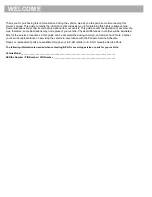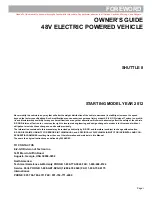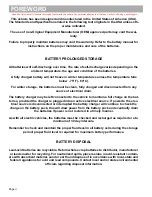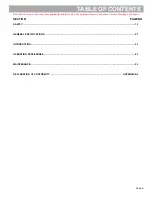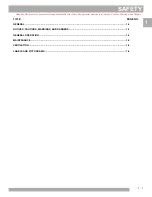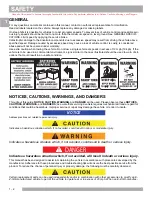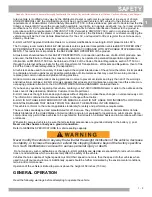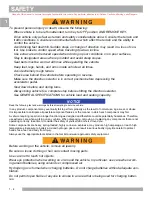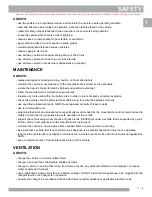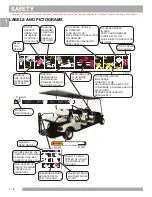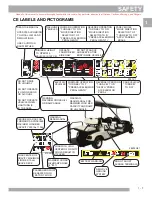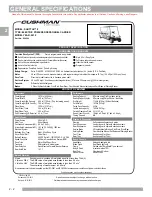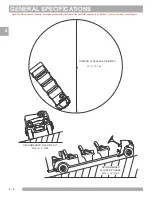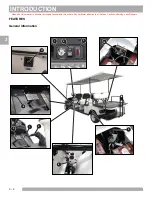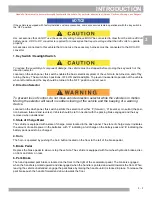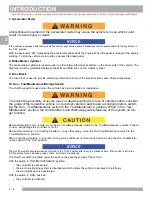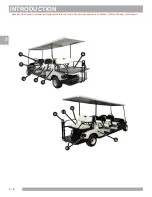
1 - 5
SAFETY
Read all of this manual to become thoroughly familiar with this vehicle. Pay particular attention to all Notices, Cautions, Warnings, and Dangers.
1
ALWAYS:
• use the vehicle in a responsible manner and maintain the vehicle in safe operating condition
• read and observe all warnings and operation instruction labels affixed to the vehicle
• follow all safety rules established in the area where the vehicle is being operated
• Leave the vehicle when there is a risk of lightning.
• reduce speed to compensate for poor terrain or conditions
• apply service brake to control speed on steep grades
• maintain adequate distance between vehicles
• reduce speed in wet areas
• use extreme caution when approaching sharp or blind turns
• use extreme caution when driving over loose terrain
• use extreme caution in areas where pedestrians are present
MAINTENANCE
ALWAYS:
• replace damaged or missing warning, caution or information labels
• maintain the vehicle in accordance with the manufacturer’s periodic service schedule
• ensure that repairs are performed by trained and qualified personnel
• follow the manufacturer’s maintenance procedures
• insulate any tools used within the battery area in order to prevent sparks or battery explosion
• check the polarity of each battery terminal and be sure to rewire the batteries correctly
• use specified replacement parts, NEVER use replacement parts of lesser quality
• use recommended tools
• determine that tools and procedures not specifically recommended by the manufacturer will not compromise the
safety of personnel nor jeopardize the safe operation of the vehicle
• support the vehicle using wheel chocks and jack stands, NEVER get under a vehicle that is supported by a jack,
lift the vehicle in accordance with the manufacturer’s instructions
• maintain the vehicle in an area away from exposed flame or persons who are smoking
• be aware that a vehicle that is not performing as designed is a potential hazard and must not be operated
• test drive the vehicle after any repairs or maintenance in a safe area that is free of both vehicular and pedestrian
traffic
• keep complete records of the maintenance history of the vehicle
VENTILATION
ALWAYS:
• charge the vehicle in a well-ventilated area
• charge in an area free of flammable liquids and items
• charge a vehicle in an area that is free from flame or spark, pay particular attention to natural gas or propane
water heaters and furnaces
• use a dedicated 15-amp circuit for each battery charger, DO NOT permit other appliances to be plugged into the
receptacle when the charger is in operation
• operate the charger in accordance with manufacturers recommendations or applicable electrical code


